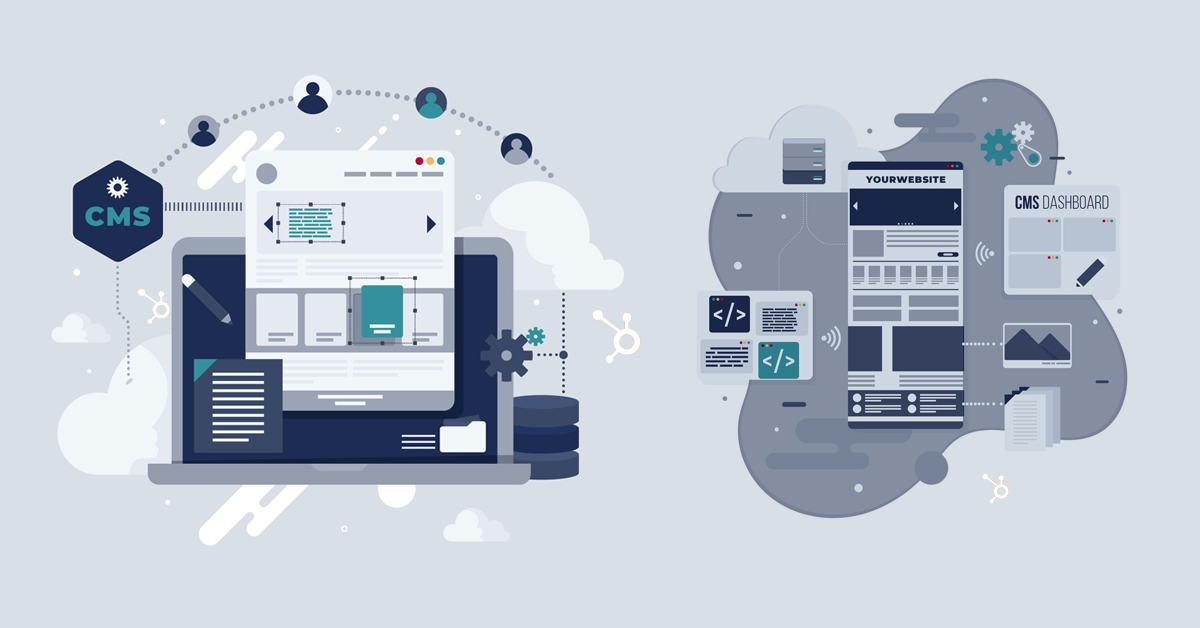The Marketing Tech Stack Sandwich
July 1, 2021

Lots of marketing elements have to come together and work in perfect coordination. Parts of it are constant, but you can always change some layers within the stack and observe the effects. And it does not need every element to be used simultaneously.
The basics of the marketing tech stack evolve quickly in the digital world because every company is jockeying for an advantage.
So, what has changed?
The evolution of the CMS
Content Management Systems (CMS) were focused on ease of editing and grew from the history of blogging. As the number of posts increased, getting customers to find posts they were interested in proved to be a problem.
Now, it is important to align the content along topics or depth and then serve them up in a sequence, so that customers can go as deep as they like into the subject with little or no effort.
HubSpot CMS ensures that as new content gets created, the older relevant posts or videos don’t disappear into a dark vault but are highlighted and placed before visitors in a pre-defined sequence.
HubSpot CMS features emphasize the ease of discovery over navigation. They are linked to trigger points for additional action from visitors, whether it is downloading an ebook or requesting a team member to get in touch. The analytics also show which posts get the most traction, which becomes an important consideration for prioritizing content strategy and placement of trigger points.
Analytics tools
There has been considerable progress year on year. As the volume of data increases, the parameters of what should be tracked become vital. Vanity metrics have steadily dropped with a deeper understanding of what is valuable to know.
Earlier, number of visitors was among the most important – but the quality of visitors has now become the primary objective. B2B companies don’t need to generate the traffic that eCommerce sites do. They need to attract a specialized audience. And that has to flow from the marketing strategy and media evaluations to attract the right traffic.
HubSpot provides inputs on the traffic patterns that competitors and the category attract, so it becomes the basis for setting up the right analytics parameters to track, which in turn becomes the foundation for building inbound business long-term.
The number of reports that can be generated has vastly improved, and deep diving into specific aspects of site visits can yield huge payoffs with the right tracking and follow-up actions.
Advertising tools
They change practically every month as nuances or areas not covered by other tools come into the picture. The lesson is to wait until technology matures because customers don’t change as fast as technology does. The old adage that it is the person and not the technology that drives results still holds.
Find a set of tools that work best for you and then go deeper into them to track and apply changes. With new tools, there is a need to integrate them into the mix, and the effects may not be clear to begin with. Over time, the tools that make a definite difference stand out, and the benefits they bring are evident.
The core here is to find out what customers want. Look at tools from that perspective, and then it becomes easy to place them within a certain hierarchy.
Email management
Segmentation and drip sequences are two of the biggest developments in email management. Earlier, it was one size fits all, and the newsletter or emails were broadcast or sent out every week or couple of weeks.
Now, there’s a much better understanding of how the email lists must first be segmented and the right content created for each of the segments, and the open rates can rise dramatically with proper segmentation.
Drip emails in a sequence have a far better effect in nurturing leads over a long period as opposed to the periodicity of emails. Each one needs to work along a series of steps and move to the next one depending on the response. So, the handoff to sales and working out the sequence becomes crucial.
In HubSpot, these audiences can easily be managed and tracked separately. Segmenting specific audiences within the email list and creating drip sequences for long nurture is built into the system.
CRM and SEO
The rules regarding SEO seem to change every time Google changes the algorithm! The best way is to keep customer interests as the primary focus, leading to several long-term benefits.
The keywords will rank well over time if they fit in a natural flow within the customer universe. There’s no point in trying to beat the system or the process because there may be a short spike, but it’s expensive and could result in penalties if carried too far.
On CRM, there are several changes that we shall continue to talk about in subsequent posts. As the customer base expands, the way to manage them and what needs to be tracked changes.
Please feel free to contact us on any aspects covered here – and build the tech stack that works and a Club Sandwich!

Venu Gopal Nair
Advertising and Branding Specialist, CEO - Ideascape Communications, A professional journey through the tumultuous years of advertising and communication, starting in 1984. Started out in the age of print, saw the changes with the entry of satellite TV and the momentous transition to digital. Advertising and branding today is vastly different from its practices in the 20th century and the last two decades have seen dramatic changes with smartphone domination. As a Creative Director turned CEO, making the transition personally and professionally has been a tremendous experience.
Related Articles

October 27, 2020

December 7, 2020



